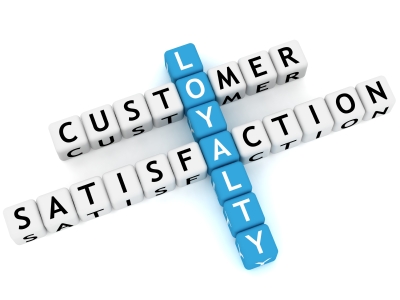There’s a lot going on when a customer opts to buy your product. On the surface, it looks like they’re just picking up something from your rack and handing you cash in return. But as every smart entrepreneur and skilled salesperson knows, this isn’t the full story.
We’re getting at the fact that your clients want your services to add value to their lives. They’re looking for more than just a nicely wrapped product (although this certainly helps). When they part with cash, they expect to get an upgrade on an aspect of their lived experience. If you’re giving them this, they’ll almost certainly stick with you.
What kind of benefits do you think people in your brand’s target market are seeking? You could say they want their hunger satisfied when they consume packaged peanuts from your store, or cleaner clothes when they use detergent they buy from you. These are the bare minimum they’d expect. But they can get these elsewhere too. What things about your service make it stand out from the rest? What ‘extra’ benefit tips the scale in your product’s favour?
Those last few questions are what we’re examining here. Because we live in a world that’s saturated with options and messaging, your brand must be able to tear through all that signal and noise to capture its ideal audience’s attention. And you can only do this by selling more than just the regular features. Otherwise, they’re not likely to give your stuff a second glance.
What extras can you offer your target market? Here are a few suggestions.
1. Community
Humans crave relationships. We want to belong in a group, even if it’s a band of two. A smart way of gaining the attention of your audience could be to tap into this natural tendency for settling and interacting in communities.
This sense of community may be strong and materialize as membership of an exclusive business club, made up of subscribers to your premium products, for example. Membership may come with great benefits, such as discounts and networking opportunities (an example of this is ConnectNigeria’s Club Connect).
But it doesn’t have to go all the way. You can create a sense of community by emphasizing it in your marketing and communication with prospective and existing customers. This is what goes on when a company says you can “become one of a hundred thousand happy users of their product,” or “be part of their global network of high achievers” by buying from them.
In a nutshell, you can create the impression of a community bound together by a special brand (yours), or build a physical one with tangible perks for members.
2. Aspiration
How do your services help customers improve their lives? Can you think about the possible ripple effects that these improvements can have on other aspects of their being and on the
If the answers to these questions are true to life and impressive, you may refer to them when describing your service’s benefits. Better still, you could make these points the crux of your messaging, from brand storytelling to case studies.
Admittedly, it’s easier to employ this strategy with certain products than with others. A web design company may advertise its service as something that enables global reach and rapid expansion for small businesses. But it’ll take more creative effort to market a soft drink as having an impact of comparable significance.
3. A Lifestyle
How do you sell a lifestyle? We’ll answer this question by going through a couple of examples.
Let’s say your clothing store sells low-cost wears, and you’re wondering how you’ll present it as more than a place to help people dress up for a relatively small price. One way to approach this would be to say that your store sells to smart, money-wise people, who want the best possible value for their every dime.
On the other hand, if your store is a high-end one stuffed with clothes from elite fashion labels, you may describe it as helping customers live a luxurious, classy lifestyle. You’ll be drawing from another vision of value- one which equates high prices to top quality or sheer ostentation, as opposed to the extraction of every possible benefit from every naira, as was the case in the first example.
4. Affinity With Tradition
How about an Aso Oke store which makes a point of being a bastion for cultural heritage and good old art?
There are many ways such a store could appeal to its buyers. For example, it could remind them of the good old days when the traditional wears were the norm, and how they were symbols of an age in which culture was strongly held on to. It may also emphasize the beauty of the
The good thing is, you can do the same with almost anything that’s at least a few decades old. Whether you’re a vendor for an old name in the soap making business or a famed cereal brand with roots in the mid 20th century, you can get into your customer by inspiring nostalgia (if they’re older) or curiosity (if they’re younger) with the way you market your vintage products.
Conclusion
There are numerous other things you could give your buyers apart from the ones we’ve talked about here. This is just a starting list. Now, get going and think up others that’ll help raise the value of your goods and services in your customers’ eyes.
Featured image source: Digital Growth

